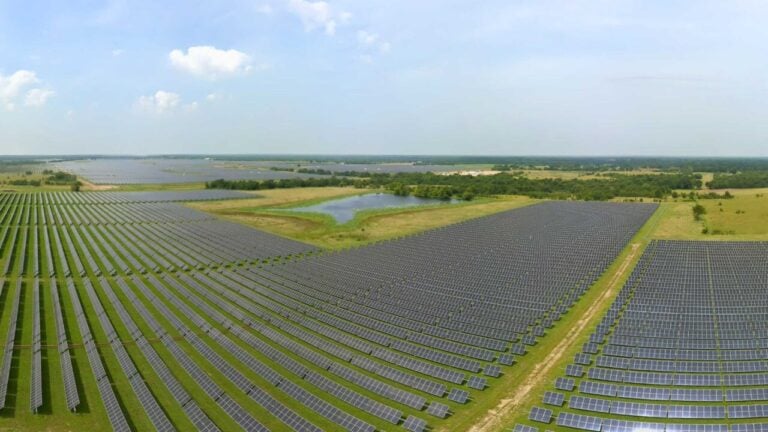
Donald Trump has issued an executive order to tighten restrictions on renewable energy tax credits just days after signing his “One, Big Beautiful Bill” act into law, which significantly cut federal support for renewables.
The order instructs the US Secretary of the Treasury to “build upon and strengthen” the repeal of solar PV and wind tax credits included in last week’s bill.
Try Premium for just $1
- Full premium access for the first month at only $1
- Converts to an annual rate after 30 days unless cancelled
- Cancel anytime during the trial period
Premium Benefits
- Expert industry analysis and interviews
- Digital access to PV Tech Power journal
- Exclusive event discounts
Or get the full Premium subscription right away
Or continue reading this article for free
The Treasury will tighten the definition of the “beginning of construction” for solar and wind projects eligible to receive Inflation Reduction Act (IRA) credits. The Republican mega bill said that sites that have started construction within 12 months or begun producing power by 2028 would be eligible to receive IRA credits in a “safe harbour” mechanism.
The new executive order tells the Treasury to restrict safe harbour provisions “unless a substantial portion” of a project has been built and to prevent the “artificial acceleration or manipulation of eligibility” for these projects.
It also instructs the secretary to take “prompt action” to implement the “enhanced Foreign Entity of Concern (FEOC) restrictions in the One Big Beautiful Bill Act”.
The FEOC restrictions set out increasingly strict parameters for “material assistance” from specified foreign countries, most notably China, which controls much of the global solar supply chain capacity.
Finally, the bill instructs the Secretary of the Interior, which controls federal and tribal lands across the US, to “revise” and “eliminate” any policies which supposedly provide “preferential treatment to wind and solar facilities in comparison to dispatchable energy sources”.
Analysis – political will
Monday’s executive order came just three days after Trump signed the tax reconciliation bill into law – a bill which has been closely tied to the president and seen as a hallmark of his presidency.
Voting on the bill was a close-run thing. Voting was tied in the Senate and required vice-president JD Vance to break the stalemate, and the final version passed the House with a majority of just four – 218 vs 214.
This executive order seems to go beyond the administrative measures and text of the bill to harden the Treasury’s approach to solar and wind projects. It describes “expensive and unreliable energy sources like wind and solar”, the growth of which it claims “displaces affordable, reliable, dispatchable domestic energy sources, compromises our electric grid, and denigrates the beauty of our Nation’s natural landscape”.
Renewable energy industry figures have pointed to the damage that scrapping tax incentives will do to the wider US economy. Electricity demand is growing in the US, and solar PV has come to meet much of that growing demand. 50GW of new capacity was added in 2024, according to data from market research firm Wood Mackenzie, more than any other renewable or fossil fuel technology.
Solar has also provided a lot of power to major US corporations, particularly the big tech firms whose CEOs sat pride of place at Donald Trump’s inauguration in January.
The language of this executive order, and its apparent effort to stymie solar development beyond the provisions reached in Congress, chimes with the sentiments expressed in the ultra-conservative Project 2025 document associated with Trump before his re-election.
As PV Tech reported back in January, the document describes “The Biden Administration’s assault on the energy sector…forcing the economy to build out and rely on unreliable renewables.” It also advocates a broad reduction of government spending, tax cuts and the primacy of executive power.
Trump has publicly disassociated himself with the programme.
The full impact of this executive order and the bill itself on the US solar market is yet to emerge. Read PV Tech’s coverage of the bill here.






